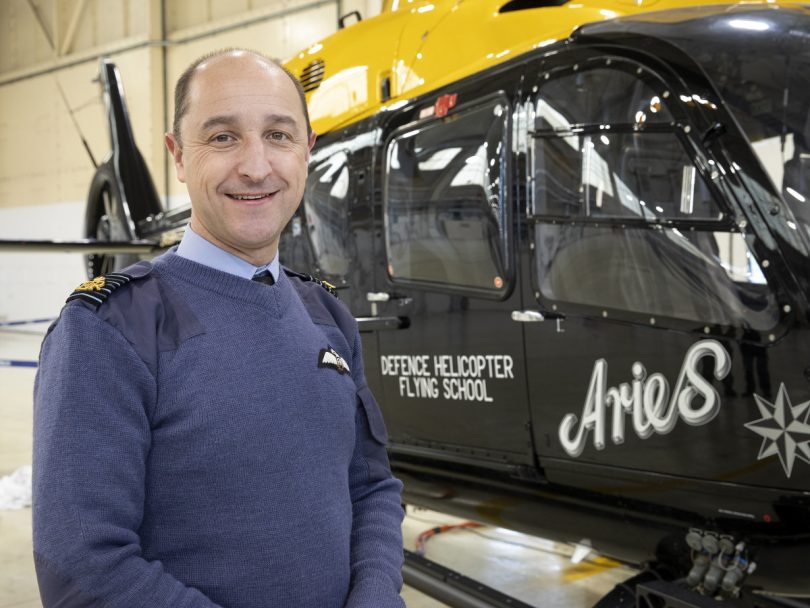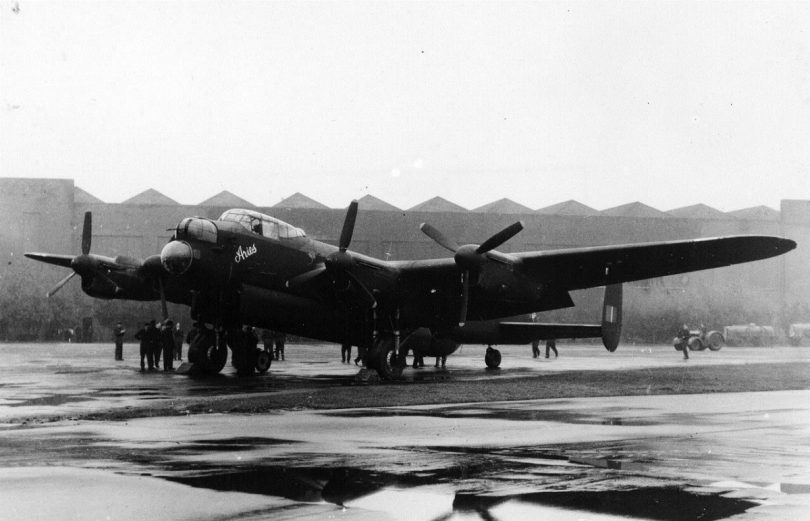RAF Shawbury has commemorated the 75th Anniversary of the Aries round-the-world record breaking flight and reinstated a long-standing tradition.

In 1944, RAF navigation training was centred on RAF Shawbury and the Empire Air Navigation School. The School trained RAF and allied navigators and carried out research to improve navigation techniques and spread this learning throughout the Commonwealth. In Sep 1944, a Lancaster bomber PD 328 was offered to the School for research flying and was named Aries. Under the command of Wg Cdr David McKinley DFC AFC with a crew of 10, Aries took off from RAF Shawbury on 21 October 1944, just over 75 years ago and landed back on 14 December 1944.
The trip was successful, and Aries returned after 53 days and over 200 flying hours, having made a series of ‘firsts’ and set a few records. Aries was the first British military aircraft to fly around the world and covered almost 36,000 nautical miles on this historic flight.

Aries was finally retired in January 1947 and earmarked for preservation and put into long-term storage; sadly, the order was rescinded, and the aircraft was sold for scrap in August 1948. From that point, the Aries flight has always been commemorated at RAF Shawbury. The Aries sign from the nose was preserved and is now displayed in the Officers’ Mess, whilst one aircraft always carried the Aries name; however, this ceased once the flying training was delivered under contract at the legacy Defence Helicopter Flying School.
Today navigation training is still delivered at RAF Shawbury by the Defence Helicopter Flying School as part of the rotary element of the UK Military Flying Training System. Trainees learn basic navigation, using similar techniques to those developed by the Aries crew. The trainee aircrew are now aided by a modern fleet of 29 Juno (H135) and 3 Jupiter (H145) helicopters fitted with glass cockpit technology and advanced touchscreen avionics, which support this world-class Military Flying Training System.
Group Captain Chris Mullen said: “This has been a wonderful opportunity to remember, with our Defence partners, the heritage of RAF Shawbury; today, we are reinstating a long-standing tradition on the 75th Anniversary of this round-the-world flight landing back at RAF Shawbury. I would like to also take this opportunity to pay tribute to the brave Aries crew who pushed the boundaries of aviation to perfect long-range navigation techniques at a time when bombs were still falling on London. Today we Applaud and Recognise their Innovation, Excellence and Service with the naming of this Juno Aries.”





 Shropshire Live is regulated by
Shropshire Live is regulated by 